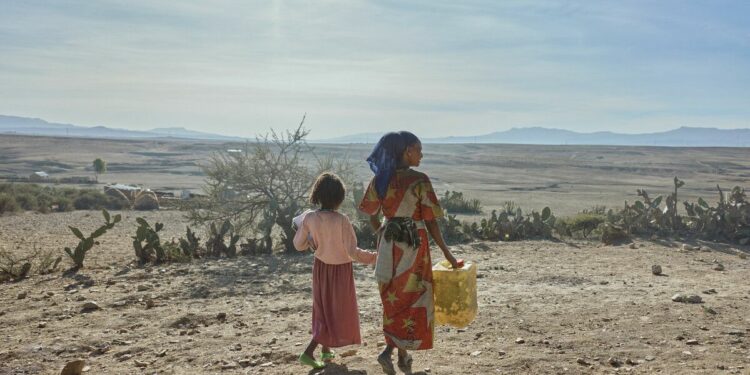“I can’t remember a time in all the years of Mary’s Meals when it felt like there were so many simultaneous food crises unfolding at the same time,” MacFarlane-Barrow told CNA.
“All over the developing world, we see millions of people who are on the edge … because of rising food prices and because their income is not going up at the same pace, they’re falling over the edge. They simply can’t afford food … so much of it comes back to poverty.”
Mary’s Meals largely operates in what MacFarlane-Barrow calls “the darkest places, the places where children are suffering the most — where children are suffering most acutely from malnutrition.”
They use locally sourced ingredients whenever possible and rely heavily on the local Daughters of Charity to cook the food, but human conflict and climate events such as droughts and floods can seriously hamper their work.
MacFarlane-Barrow said the schools where they operate in Tigray and elsewhere provide hope, and providing free meals at the schools helps to provide an incentive for students to get educated. This leads to positive ripple effects that they’ve seen have enormous impact through generations, he said.
“None of this hunger we’re talking about, none of it is inevitable … There’s no reason why any single child in this whole world could go a day without food or be hungry in this world of plenty, in this world where God’s given us an abundance, more than we need,” MacFarlane-Barrow said.
“When we give, when we share what we’ve been given with other people in need, it makes us more fully human. I think it helps us become more the people God made us to be.”
‘The difference between life and death’
Landlocked and slightly smaller than Texas, the majority-Christian nation of South Sudan consistently ranks near the very bottom on the list of most developed countries. Despite the rich agricultural potential of the region, hunger is widespread. Conflict, corruption, and widespread poverty make for enormous challenges in the young country — young not only because it was formed only in 2011 but also because the life expectancy is a mere 59 years.
South Sudan has the largest refugee crisis in Africa with more than 2 million IDPs (internally displaced people) due to conflict, insecurity, and environmental challenges, the U.N. Refugee Agency reported in 2022. Thousands of homeless children — most orphaned by the war — roam the streets of South Sudan’s major cities. There are also more than 2 million South Sudanese refugees living in neighboring countries.
Pope Francis’ historic visit to South Sudan in early 2023 was a galvanizing event that shed an international spotlight on a beloved but severely ailing country.
(Story continues below)
Subscribe to our daily newsletter
Matt Smith, vice president of strategic partnerships and development at the Washington, D.C.-based Sudan Relief Fund, which has worked in the region for the past 25 years, told CNA last week that South Sudan has recently been hit by alternating weather extremes — severe drought followed in many cases by severe rains.
“Food insecurity, especially in a place like South Sudan, is still the difference between life and death,” Smith noted.
“Often, even if there is not an official designation of famine per se, the sheer volume of people in certain communities that are food insecure still, I think, necessitates urgent action just as much as if there were an official famine designation.”
After devastating civil wars from 1955–1972 and 1983–2005, fighting began again in 2013 following the country’s 2011 independence. Both sides have been accused of serious atrocities over the course of the conflict, including the raping of women, killing of civilians, and recruitment of child soldiers.
Many people in South Sudan have been internally displaced by the fighting repeatedly and have had to start their lives over multiple times. They often simply need access to simple farming tools and resources to do their jobs and feed their families, Smith said.
“South Sudan, especially in the western part of the country, has incredible access to land that should be able to be used to grow crops, to feed people en masse … There’s a deep history amongst many of the peoples across South Sudan that know how and have survived off the land for many years. It’s just a matter of making sure that they have proper tools and resources available to them … in spite of some of these challenges like the fighting and the droughts and the flooding and things like that,” he said.
Credit: Source link




